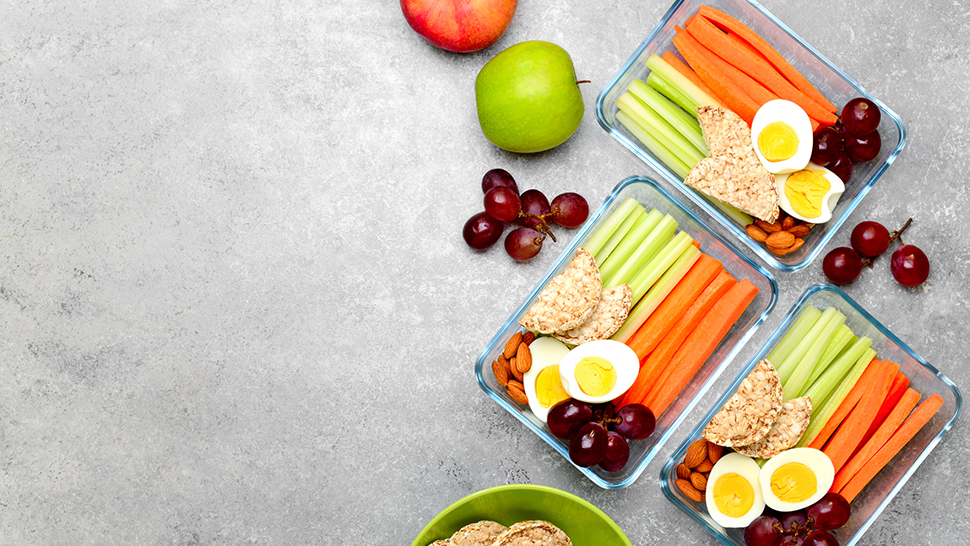
Do you have tips for healthy snacks I can eat on the go to avoid getting “hangry” and resisting the vending machine?
We’ve all been there — a day full of appointments with no time to think in between, much less fit in a healthy snack. Far too often, our go-to fix is a quick but unhealthy bite from a vending machine or convenience store, which is where snacking gets a bad rap. So what is a busy serial snacker to do?
A little planning will help you trade in chips and cookies for more nutritious options. Research shows that munching on a balanced snack — one with a mix of protein, complex carbohydrates (hello fiber), and healthy fats — is an excellent way to stabilize blood sugar and stave off hunger that would otherwise send you reaching for processed high sugar and high-salt snacks, which leave you feeling hungry soon after.
Planning means keeping your pantry, purse, or backpack well stocked so you avoid those last-minute decisions. If you’re up for a little time in the kitchen, prepare and pack your snacks for the week so you can grab and go when you’re in a rush. And for you meal-prep procrastinators out there, don’t worry: we’ve got you covered too.
Emphasize whole foods
Foods that are in their natural form or are lightly processed will keep you full for longer. Fruits, vegetables, nuts, seeds, whole grains, and eggs are great places to start and you can build from there.
Eat a mix of protein, fiber, and fat
Aim for at least two of the three in any snack. That might mean pairing an apple (fiber) with nut butter (fat with a little protein) or hummus (protein and a little fat) with vegetables (fiber) or whole-grain crackers (also fiber). Other easy on-the-go options include nuts with dried fruit, a hard-boiled egg with some fruit or vegetables, or homemade energy bites.
When picking packaged, use the same principles
Let’s be real. Grabbing something in a package is the quickest and simplest option — and luckily food companies are now making plenty of prepackaged items that will keep you energized until your next meal. However, be wary of any health claims and instead look at the ingredients. Choose items that are mostly whole food-based, such as dried chickpeas, beet or kale chips, or whole-grain crackers. Pair these with something that has protein and fat, like hummus or cheese. Energy or protein bars can also be a great option, but look for ones with minimal or no added sugars.
Think beyond typical “snack” foods
Have a small amount of leftovers that aren’t enough for a meal? Why not make it a snack that requires zero preparation beyond putting it in a container? When you think beyond snack foods, you’re more likely to put something nutritious on your plate. Some of our favorite out-of-the box combinations include roasted sweet potatoes with nut butter, a three-bean-and-vegetable salad, half an avocado with salsa, or half a vegetable and hummus sandwich.
If you’re finding yourself reaching for more than one snack between meals, it may be that your regular meals need to be more filling. The key to healthy snacking is to listen to your hunger cues. Although snacking is perfectly healthy and a great way to hold off hunger, it can easily become a habit out of necessity. So bottom line — make a plan to snack smart!
At Bon Appétit, we know there’s a lot on your plate that you worry about. That’s why we have a team of registered dietitian nutritionists ready to answer your nutrition questions about which food choices will help you avoid unwanted pounds, work or study (and sleep!) better, and form long-lasting healthy eating habits. Email your questions and feedback to nutrition@cafebonappetit.com.